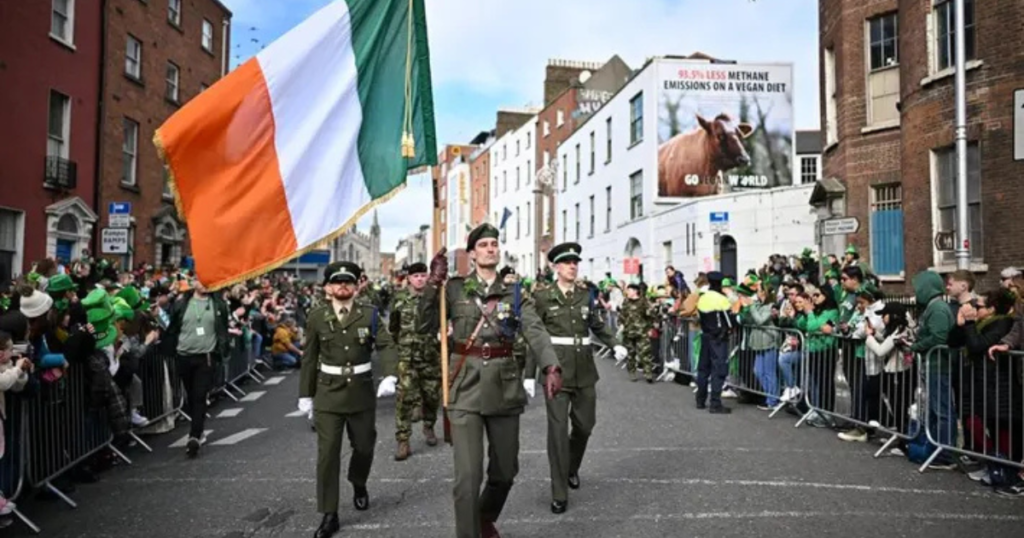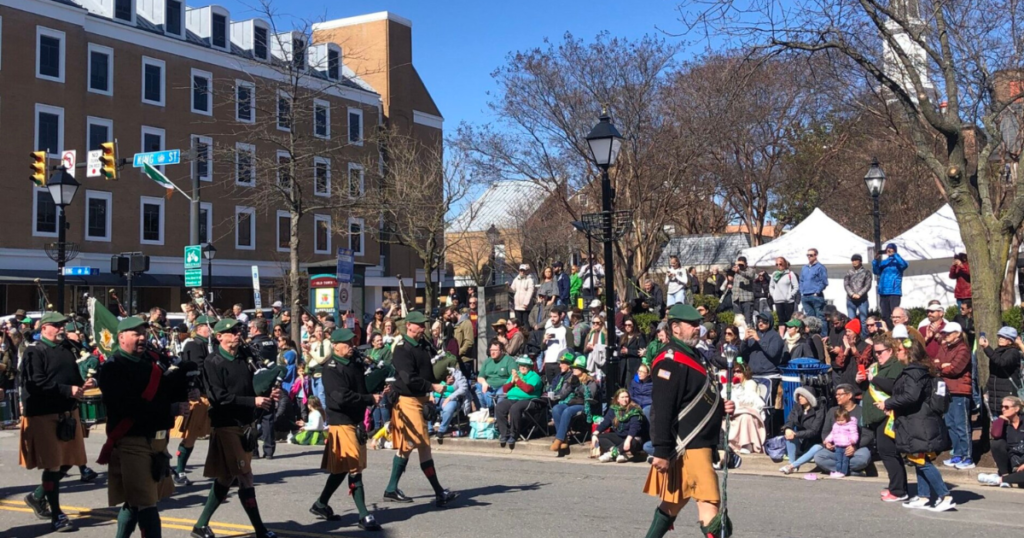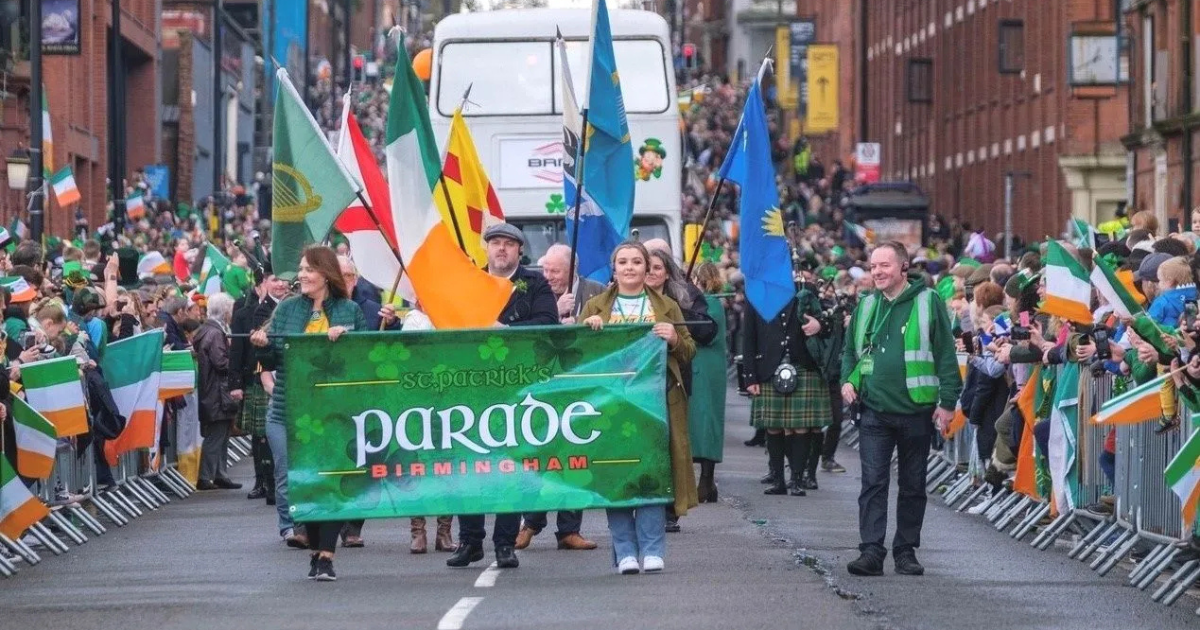St. Patrick’s Day On March 17th, the feast of St. Patrick is a day filled with history and activities. Since preparation for 2025 celebrations is on our mind, we’d better learn about the parade, this day, and Saint Patrick. Thus, our article shall provide you an overview in detail of what to expect during St. Patrick’s Day 2025: Parade details, cultural importance, and quite a bit more about how other parts of the world will celebrate this Christian feast in their own peculiar ways.
What to Expect from the St. Patrick’s Day Parade in 2025?
Where will the parade take place in 2025?
The St. Patrick’s Day parade of 2025 shall be very different from nothing inserted into other cities with excellent occasions to mark. Primarily, the parade in question was the New York City parade, a tradition that has continued since 1762. This symbolic parade will feature thousands of men and women parading along Fifth Avenue to share the rich culture of Ireland through music, dance, and brightly fabricated floats. Spectacular parades are also held in other major cities, including Dublin, Chicago, and Boston. In Dublin, the parade is a center-point of celebrations, involving the streets decked with colors and the spirits of unity. Travelers in 2025 can expect that the streets will be packed by eager viewers wishing to celebrate St. Patrick’s Day and remember the very important legacy built by the saint the Irish proudly call theirs.
What time does the St. Patrick’s Day parade start?
In 2025, various places will have different starting times for the St. Patrick’s Day parade. For example, in New York City, the parade usually starts at 11 AM, giving the participant time to come over and feel festive. Noon is when the Dublin parade actually sets-off, and early comers will be well-set to be well-positioned to see it, given the huge crowd that normally graces parades. While waiting for the bands to tune up their bands and the floats to get ready, the excitement and anticipation builds to the celebration. When you decide to attend the celebration, check local schedules for times, just in case of changes.
How can you participate in the 2025 parade?
Whether joining a group or just watching, participating in the St. Patrick’s Day parade in 2025 should be a thrilling experience. Besides, many organizations and cultural groups will usually admit you to their march. If you represent an Irish community organization, a dance group, or a band from your town, please consider talking to them about possibilities of joining the parade. On the other side, if you will be enjoying the activity in the crew of spectators, you could wear green clothes and have on display shamrocks or clovers to represent the spirit of the day. It is the interaction with people, sharing the true joy, and honoring the tradition of St. Patrick’s Day that will spice up your memory.

How is Saint Patrick Celebrated on March 17?
What are the traditions associated with St. Patrick’s Day?
Saint Patrick’s celebrations on March 17th contain several rituals honoring his life and contributions to Christianity in Ireland. Chief amongst all these practices is wearing green clothing, symbolic of the lush terrains of Ireland and said to prevent against any mischievous leprechaun shenanigans. Parades, music, and dance are also part of the festivities, bringing people together under one umbrella to celebrate Irish culture. Corned beef and cabbage, among others, have traditionally been partaken during the celebrations, with others joined by drinks like Irish stout and whiskey. One could know that by attending local church services and such events, one would be harking back to what had been traditionally regarded as a day to commemorate the saint. These sets of practices have all combined to give expression both to Saint Patrick’s earthly life and also community bonding and cultural pride.
Why is wearing green important on St. Patrick’s Day?
The tradition of dressing in green on St. Patrick’s Day came in waves, supported through the many eons by the cultural symbolism of this very color. Green stands for the emerald green hills of Ireland and the shamrock, which Saint Patrick is said to have used in explain the holy trinity to the Irish people. Wearing green clothes thus expresses solidarity with the Irish heritage, having luck attributed to it. Those not wearing green are liable to be pinched, in a friendly fashion, adding to the celebratory atmosphere of the day. Besides contributing to the cultural unfolding of the day, wearing green is also a way of connecting with others over common merriment.
What role does the shamrock play in the celebration?
Waidar, an emblem of St. Patrick and an ornamental representation of Irish culture, plays a vital role in the celebration of St. Patrick’s Day. Since it is a three-leaved plant, shamrock is further tied to the Saint Patrick legend. Saint Patrick, through his teachings about the holy trinity, made the shamrock a symbol of Christianity in Ireland. Thus, the shamrock is incorporated in clothing, floats, and decorations. Many other people wear shamrock pins or make crafts in shamrock form to honor their heritage. The shamrock itself reminds the celebrants of the teachings of Saint Patrick and the lasting impact he has had on Irish identity.
What Historical Significance Does Saint Patrick Hold?
Who was Saint Patrick and why is he the patron saint of Ireland?
Saint Patrick, representing the 5th century, is celebrated as the patron saint of Ireland because of his important use in converting the Irish into Christianity. Being captured by Irish pirates, he was taken to Ireland, where he passed several years in captivity. After his escape, he returned to his family, yet he felt the urge to go back to Ireland as a missionary. His Christianizing Ireland with travels across all country parts created an invaluable contribution to it, since he built churches and baptized many into the new faith. Because of this, he became a milestone in his journey as an emblem of national character, and he was later canonized as Ireland’s patron saint by decree of the Church, his day of dedication being the 17th of March.
How did Christianity spread in Ireland through Saint Patrick?
Saint Patrick’s work of missionizing was an important link for the spread of Christianity in Ireland. Using local traditions on the one hand and integrating them into his teaching on the other, he would make a deep connection with the Irish people. He taught the concept of the holy trinity by using the shamrock, and thus, explained what appeared totally incomprehensible even to well-educated minds in a more relatable manner. On his tours, he established quite a number of churches and baptized approximately thousands of people, thus effectively establishing a foundation for Christianity in Ireland. The effects that he had in such a religious domination on this country are more than profound, as he is recognized not only as a religious figure but, as well, for his being a cultural symbol of the strength and spirituality of the Irish people.
What myths and legends surround Saint Patrick?
The myth has flourished with Saint Patrick being legendary-a mythical figure, of sorts-in several accounts about his life. Chiefly remembered in this regard is the most famous one, the pursuit of snakes from Ireland, which suggests, by inference, the end of paganism and, thus, the advent of Christianity there. Other traditions revolve around his healing the sick through miracles and fighting against various tribes. These stories were handed down through generations and are usually intermixed with fact and folklore. One might say that a considerable part of his life, if not all, were heavily stylized in order to place him on the stage of history and culture in Ireland; this has allowed a more convincing ground for the emergent story behind the festivity of Saint Patrick’s Day.

How Do Different Cultures Celebrate St. Patrick’s Day?
What are some unique St. Patrick’s Day celebrations around the world?
St. Patrick’s Day is celebrated in many parts of the world, representing the great spread of Irish culture. Apart from the glorious parades taking place in cities such as New York and Dublin, other distinct celebrations occur in places like Australia, where the Sydney opera house is lit in green light, and in Japan with parades and performances of Irish dances. A famous tradition that invites large crowds is the dyeing of the Chicago River green: There are quite some great spectacles. Each of these is mixed with local traditions, making the day extremely global in its celebration of Irish culture, embracing other cultures’ expressions.
How is the day parade celebrated in Dublin compared to other cities?
St. Patrick’s Day parade in Dublin is still one of the largest and most colorful in the world. While in some other cities, the celebrations are wrapped in one day Dublin features a full week festival leading up to the main event, incorporating arts, music, and cultural events to showcase the rich heritage of Ireland. The parade itself features a colorful display of floats, performances from local artists, and community participation depicting the spirit of the Irish people. Other cities such as New York and Chicago place much more emphasis upon their own unique traditions and spectacles whereas Dublin is still steeped in Irish culture, drawing unprecedented visitors seeking to immerse themselves in the spirit of St. Patrick’s Day.
What are the common foods and drinks enjoyed during St. Patrick’s Day?
When St. Patrick’s Day is observed, food and drink must feature prominently, echoing traditional Irish fare. Chief among the foods served is a corned beef and cabbage, the unfailing icon of St. Patrick’s Day, especially in the United States. Irish stew, shepherd’s pie, and soda bread represent other popular choices and pure tastes of Ireland. An Irish stout, most probably Guinness, is typically the drink of choice for most people during the celebrations. A cocktail incorporating Irish whiskey or green food coloring finds its way in many a festive occasion to join in the spirit of celebration. The food and drink related to St. Patrick’s Day not only feed the body, but also unite people on common grounds of appreciation for Irish culture.
Is St. Patrick’s Day a Public Holiday in 2025?
Which regions observe St. Patrick’s Day as a public holiday?
In 2025, St. Patrick’s Day will officially become a public holiday in Ireland, where the spirit and the pride of the nation behind it are truly insurmountable. The day is March 17, and parades and cultural festivals are organized across the all-island state. Even though within Ireland, it is a public holiday, in many parts of the world-there know some lesser, not so much an official public holiday, celebrate that in honor of St. Patrick’s Day. In the United States there are cities such as Boston and Chicago where thick Irish population parades and celebrations take place even when the day is not recognized as a public holiday. The worldwide acknowledgment of St. Patrick’s Day reflects the widespread love of Irish culture and heritage.
How do public holiday celebrations differ from regular celebrations?
Public holiday celebrations for St. Patrick’s Day may include official ceremonies, parades, and events organized by local governments, creating a more formal setting than normal celebrations. In places where St. Patrick’s Day is a public holiday, schools and businesses may close, allowing families and communities to join in on bigger gatherings and activities. The community aspect creates a feeling of togetherness and pride in their Irish ancestry, providing a feeling of specialness and significance to the day. Regular celebrations may seem more localized and informal, with groups of people celebrating together in smaller gatherings and at local pubs, without the larger parades and public events.

What events are planned for the public holiday in 2025?
In 2025, lots of events are expected in the big cities, especially in Ireland. In Dublin, there will be a week of celebration and a big parade with international artists, art displays, and community groups just before St. Patrick’s Day. Other celebrations could include folk music sessions, cultural exhibitions, and food fairs in a festival asserting the depth of Irish culture. Meanwhile, cities like New York and Chicago will probably have their famous parades, with thousands of spectators joining in. Overall, the scheduled events for the public holiday will testify to the different ways of coming together on St. Patrick’s Day, paying tribute to both the historical significance of St. Patrick and the cultural richness of Ireland.
FAQs
Q: What is the date of St. Patrick’s Day in 2025?
A: St. Patrick’s Day will be celebrated on March 17, 2025.
Q: Why is St. Patrick’s Day celebrated?
A: St. Patrick’s Day is celebrated to honor the life of Saint Patrick, the patron saint of Ireland, and to commemorate his contributions to Christianity in Ireland.
Q: What are some traditional things Irish people do on St. Patrick’s Day?
A: Traditional activities on St. Patrick’s Day include wearing green, attending the St. Patrick’s Day parade, enjoying traditional Irish food, and celebrating with music and dance.
Q: Is St. Patrick’s Day a public holiday?
A: No, St. Patrick’s Day is not a public holiday in many places, although it is celebrated widely, especially in Ireland where it is a national holiday.
Q: What is the significance of the clover on St. Patrick’s Day?
A: The clover, or shamrock, is significant because Saint Patrick used it to explain the Christian Holy Trinity to the Irish people, making it a symbol of both Ireland and St. Patrick.
Q: What are some popular St. Patrick’s Day recipes?
A: Popular St. Patrick’s Day recipes include Irish stew, corned beef and cabbage, soda bread, and various dishes featuring green ingredients like spinach or herbs.
Q: Why do people wear green on St. Patrick’s Day?
A: People wear green on St. Patrick’s Day to celebrate Irish culture and folklore, as well as to represent the green hills of Ireland. It is also said to make one invisible to leprechauns, who would pinch anyone they could see.
Q: What is the history behind the St. Patrick’s Day parade?
A: The St. Patrick’s Day parade began in the 18th century as a way for Irish immigrants in the United States to celebrate their heritage, and it has since become a major celebration, particularly in cities like New York and Boston.
Q: How has St. Patrick’s Day evolved over time?
A: St. Patrick’s Day has evolved from a religious observance into a broader celebration of Irish culture, featuring parades, festivals, and a focus on the things Irish, including music, dance, and food.

